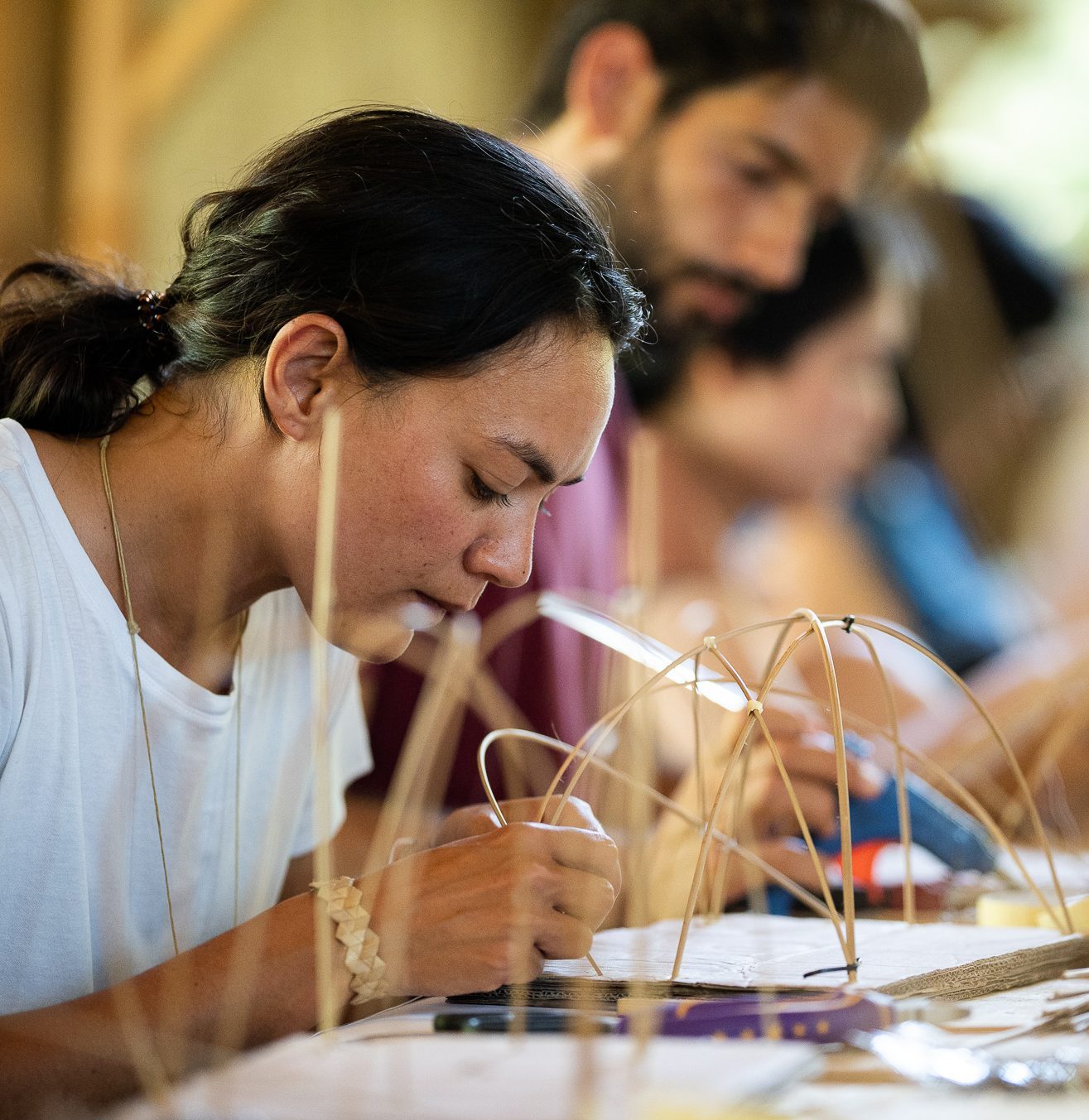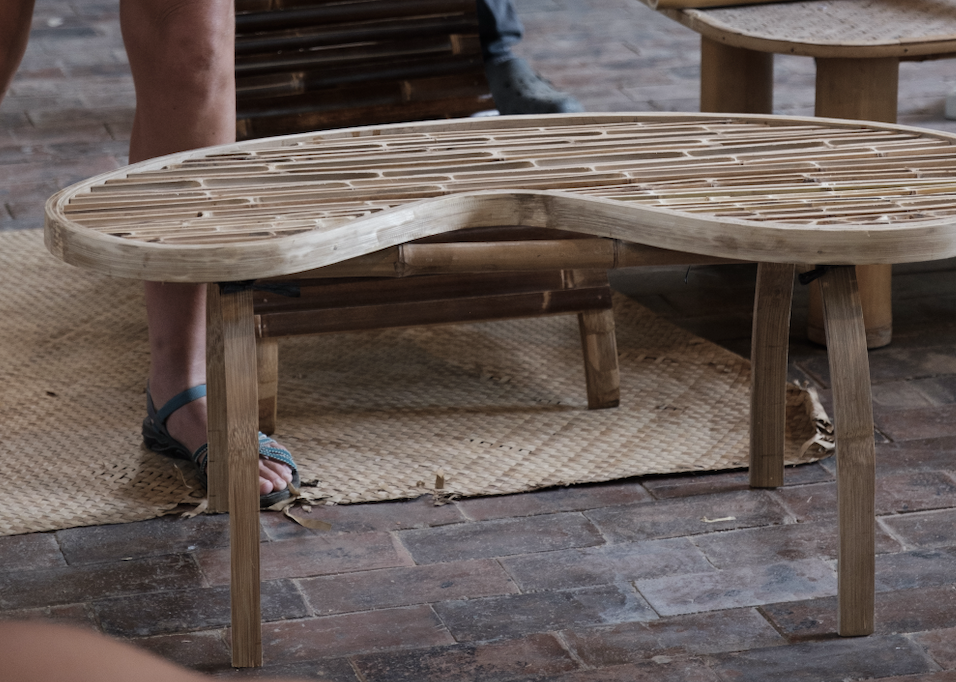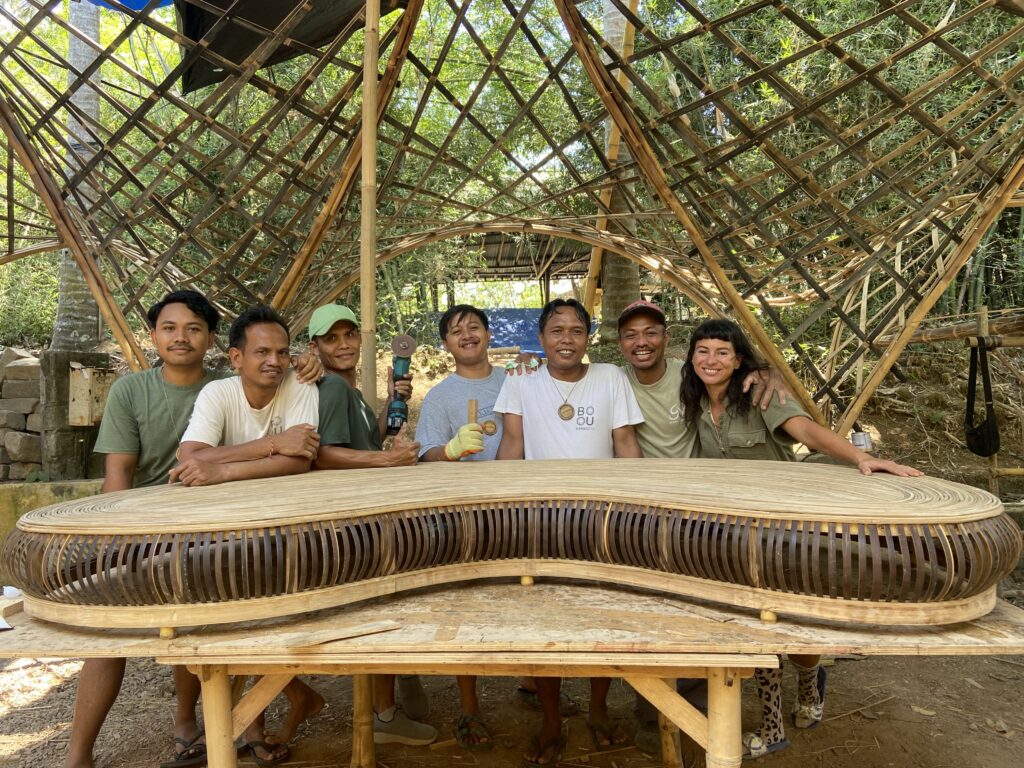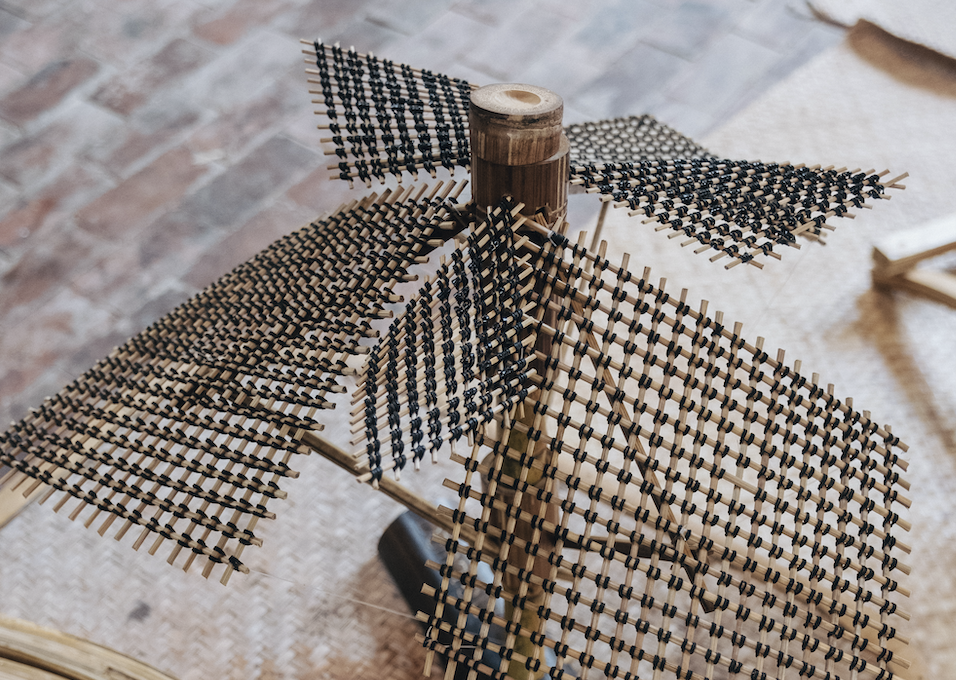The Bamboo Architect’s Model Making Kit
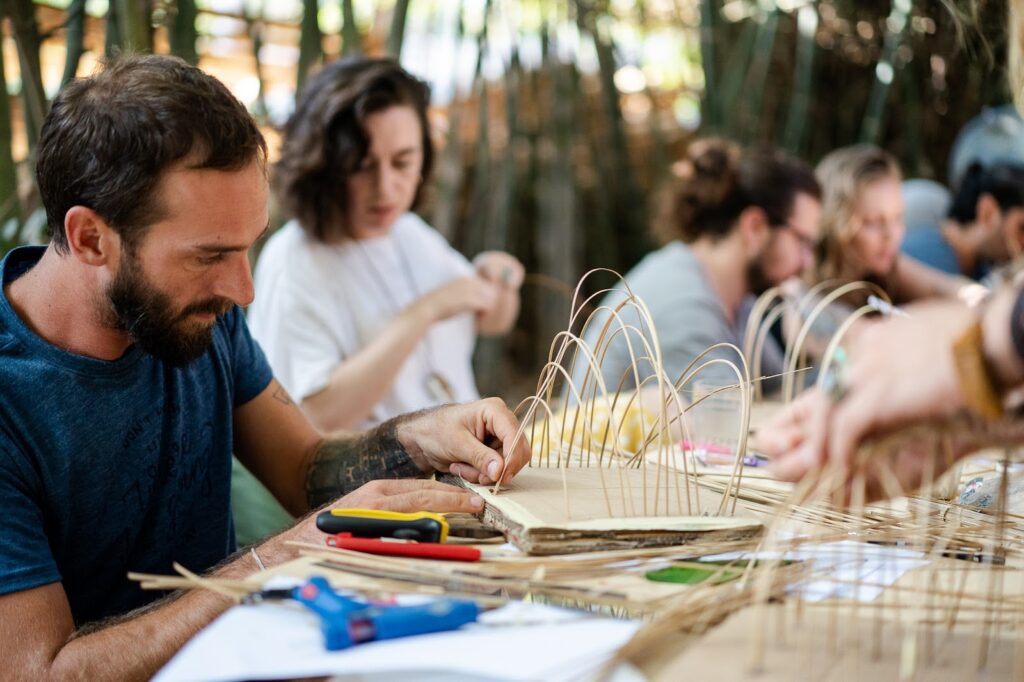
Bamboo model making is the art of creating scaled versions of a real-life bamboo structure or project during the design development stages of a project. It is the most important skill a bamboo architect needs to have. With the right bamboo model, the architect can show off his design intentions without all the drawings which can be difficult to read, especially in the context of bamboo architecture and construction.
Bamboo models are used to actively engage the client and the building team into the design process, giving them genuine insight into the feeling and the atmosphere that their design will convey in use. By using the same proportions as your final project design, the architect can translate many of the ideas and concepts that are crucial to their design before building the project in full-scale. This is very similar to traditional architectural models but where bamboo models differ is that they use the same material both for the model and the built form. This allows bamboo models to give even more information to the client and the building team, such as: a cost estimate, the complexity of construction and the structural properties of the design.

Additionally, bamboo models do differ from other scale models in the way they are built. Indeed, the tools and the material for bamboo models are more specific than for models made of mountboard or balsa wood as you traditionally see in architecture studios.
This is the definitive list of the material and tools that a bamboo architect needs in his model making kit:
- Bamboo Sticks and Strips
- Cutting Tools: Pliers, Utility Knife and Scissors
- Binding Tools: Superglue, Masking Tape, Double-Sided Tape and Rubber bands
- Marking Tools: Pencil, Ruler and Compass
- Base Tools: Corrugated Cardboard and a Piercing tool.

The Bamboo Sticks and Strips
At Bamboo U, we are lucky to have carpenters who hand-whittle each of our bamboo sticks for model making from the very same bamboo species we use in our construction projects (Dendrocalamus asper). We typically like to have at least two different diameters of bamboo sticks in our model making kit. One thicker diameter to represent the structural components and a thinner one for the rafters and details. By using the two diameters in the same model we are able to more accurately replicate real-life structural parameters. Additionally, our carpenters purposely leave some of the bamboo’s skin and silica on the sticks, which helps the architects to mimic the real properties of the bamboo.
That being said, we know that real hand-whittled bamboo sticks are difficult to find everywhere in the world. Instead, we suggest using Bamboo Skewer Sticks and Sushi Rollers to replace the thicker and thinner bamboo sticks respectively. If you do decide to buy a bamboo sushi rolling mat, be sure to buy the type where the sticks have a round profile. Though the skewers and sushi rollers do not have the same exact properties of our carpenter-made sticks (the silica is usually completely removed), they are a close enough dupe in the context of model making. Most likely, you will be able to find these sticks either online or at a kitchen equipment store.

Cutting Tools: Pliers and Utility Knife
This category of model making tools is much more common to the traditional architect and not so specific to the bamboo architect, but they are still very important in the creation of the bamboo model making process. All of the Cutting Tools can be found in an ordinary arts and crafts store.
The Pliers is most likely the most important Cutting Tool in your Model Making Kit. It is used to cut the bamboo sticks to the right size. When you are doing this, make sure that you are holding your bamboo stick tightly on both sides of the mark. If you do not, chances are that a piece of cut bamboo will fly off somewhere and run the risk of injuring someone.
The Utility Knife is used to thin or sharpen the bamboo sticks if you need to change their form to fit into the base or the design that you have planned out. Additionally, it can also be useful to remove the paper template on which you are bending and glueing the bamboo into a specific shape.

Binding Tools: Superglue, Masking Tape and Rubber Bands
These tools help to bind your modelling sticks together into a proper form or structure. Because of bamboo’s external layer of silica and fibres, it can be difficult to permanently bind the sticks together using traditional wood glue.
Instead, for bamboo model making, we tend to use fast-drying glues like clear Superglue as it reacts better with the bamboo sticks. The trick with superglue is to gently press the two pieces of bamboo together as you are binding them together. This will help to activate the binding chemicals. Be particularly careful when using superglue not to let it come into contact with your face, especially your eyes as it can damage them.
If you are unsure about your model and need some time to think about the design, you can start binding your bamboo sticks together using Masking Tape. Start by cutting out really thin strips of masking tape and bind them around the bamboo joint. This will help to hold your pieces together until you decide on the form more permanently.
The Rubber Bands are also great temporary binding tools, particularly if you are playing around with Hyperbolic systems, like the Hyperbolic Towers used to hold up Green School and the Hyperbolic Paraboloids that shape the Bamboo U Hall. They allow you to play around with the form and test out where and how you want to place your bamboo in real life.
The Masking Tape and the Superglue should be easy to find at an arts and crafts store. However, the Rubber Bands are most likely found in an office supply store or in the hair section of a larger supermarket.

Marking Tools: Pencil, Ruler and Compass
As with any craft project, a Pencil and a Ruler are useful to be accurate. This is no different when you are making a bamboo model. Precise measurements of your bamboo pieces, especially in the Structural and Final Models will help your construction team to find the right bamboo pieces on-site for that specific location. Therefore, you need a pencil and a ruler that will help you draw clear and detailed markings.
For the Pencil, we suggest using a softer lead. If you decide to use a H lead, it might be harder to transcribe measurements and annotations on the bamboo stick. A 2B lead is ideal. However, any lead softer than 6B will be too soft, making it hard to make precise markings that will stay on the bamboo stick.
The Ruler should be metal-based and pretty flexible if possible. This allows you to take measurements even in the most organic parts of the model with not too much difficulty. We suggest that you take two different lengths of rulers, one shorter (15cm) and another longer one (30cm) to help you measure the various parts of your model easily.
The Compass is a great additional tool if you are interested in hyperbolic forms and domes. It will help you to draw out accurate circles and arches, both on your base and in your model templates.
All of these tools can be found at your arts and crafts store.
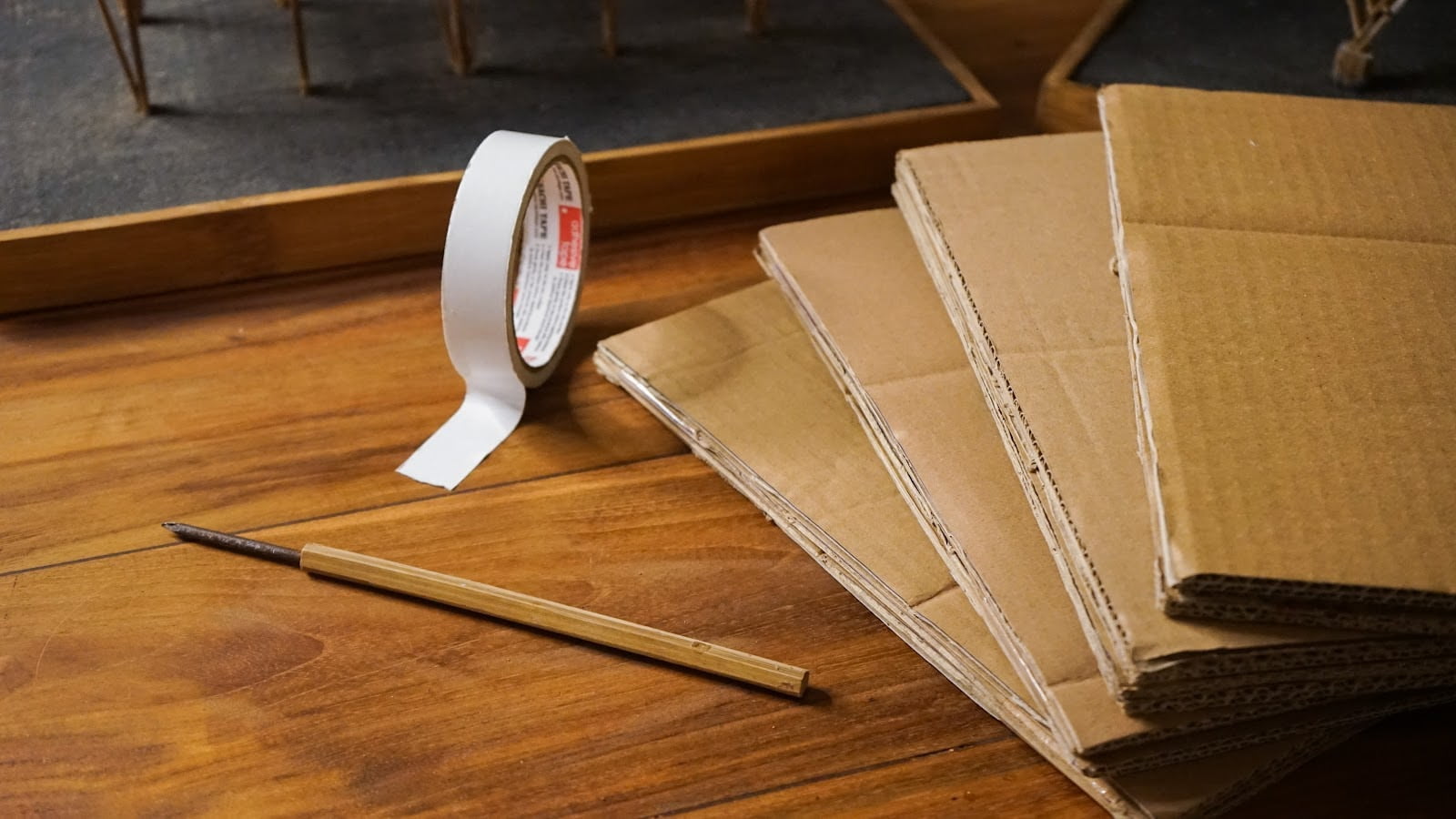
Base Tools: Corrugated Cardboard, Double-Sided Tape and a Piercing Tool
Every good bamboo structure stands on a solid base. For bamboo models, we like to use layers of Corrugated Cardboard that have been bound together with Double-Sided Tape. Typically, we use cardboard sheets that are A4 size (210x297mm), but you can choose the size of your sheets according to your model and its scale. The bigger the scale of the model, the bigger the base should be. We then layer the cardboard sheets on top of one another using an in-between layer of double-sided tape.
The Piercing Tool complements the base as a way to stick your bamboo sticks into the cardboard. It can be hard to plant your bamboo sticks immediately into the cardboard but the piercing tool can help to create a hole in the base to push your bamboo sticks more securely inside.
In the list above, we have listed the tools we always use, no matter the project or the model that we are making. However, there are other tools that you might want to add to the list to complete it but they are not essential. You can add things such as cotton thread or a hot glue gun as additional binding tools. We find that though the latter can be handy in the development of scaled design projects, we often go back to the list of essentials in the model making process.
During our Bamboo U Courses, both online and in-person, we always stress the importance of bamboo model making as an essential step to designing beautiful, strong and innovative bamboo structures. In fact, in our Bamboo Online Immersion, we dedicate an entire learning module to bamboo models. We break down the different types of bamboo models an architect will need in the development of their design as well as give you step-by-step instructions to make your own bamboo model making project. If this sounds like something you would like to learn more about, click here.

After finishing her Masters of Architecture at the University of Hong Kong where she wrote her thesis about bamboo construction for the rural communities of Bali, she now forms part of the Bamboo U Team as a Management Consulting Professional.
June 7-18, 2024
The 11 Day Bamboo Build & Design Course in Bali
In 11 days, we'll show you how to build bamboo structures we’ll share all that it takes to build with nature.
April 26, 2024
The Fundamentals of Building with Bamboo Online Course
All the fundamentals you need to get you started working with bamboo. Deep dive into cinematic videos and step-by-step guides that will provide you with a strong understanding of bamboo as a design and building material.











